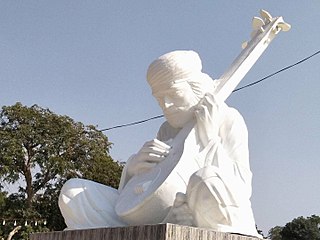Muin may refer to:
Muin may refer to:
Bar or BAR may refer to:
No or NO may refer to:
Pe may refer to:
My or MY may refer to:

Ogham is an Early Medieval alphabet used primarily to write the early Irish language, and later the Old Irish language. There are roughly 400 surviving orthodox inscriptions on stone monuments throughout Ireland and western Britain, the bulk of which are in southern Munster. The largest number outside Ireland are in Pembrokeshire, Wales.
Letter, letters, or literature may refer to:
Note, notes, or NOTE may refer to:

Golaghat district (Pron:ˌgəʊləˈgɑ:t) is an administrative district in the state of Assam in India. It attained district status in 1987. The district headquarters are located at Golaghat. The district occupies an area of3,502 km2 (1,352 sq mi) and lies 100 metres (330 ft) above sea level.

Dimapur is the largest city and municipality in the Indian state of Nagaland. As of 2024, the municipality had a population of 172,000. The city is the main gateway and commercial centre of Nagaland. Located near the border with Assam along the banks of the Dhansiri River. Its main railway station is the second busiest station in Northeast India.

Shah Abdul Latif Bhittai, commonly known by the honorifics Lakhino Latif, Latif Ghot, Bhittai, and Bhit Jo Shah, was a Sindhi Sufi mystic and poet from Pakistan, widely considered to be the greatest poet of the Sindhi language.
In early Irish literature, a Bríatharogam is a two-word kenning which explains the meanings of the names of the letters of the Ogham alphabet. Three variant lists of bríatharogaim or "word-oghams" have been preserved, dating to the Old Irish period. They are as follows:
Muin is the eleventh letter of the Ogham alphabet. Its phonetic value is [m].
NY most commonly refers to:
Template may refer to:

CCGS Sipu Muin is a Canadian Coast Guard Type 400 AP1-88 air cushion vehicle (ACV) or hovercraft based at CCG Hovercraft Base Trois-Rivières in Trois-Rivières, Quebec. The vessel was launched and completed in 1998 and entered service the same year. Sipu Main is predominantly used for icebreaking, search and rescue, and for servicing navigational aids in the Lower Saint Lawrence River and St. Lawrence Seaway.
3RR may refer to:
Fíneamhain is an Irish language feminine given name, recorded in three instances in the 14th and 15th century Irish annals.
Mu'in may refer to:
Macron may refer to:
Fairul Izwan Abdul Muin is a Malaysian lawn bowler.